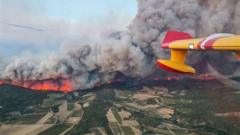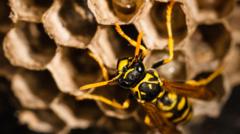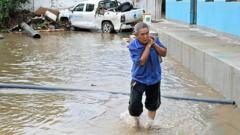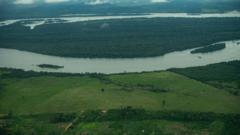This season, gardeners reflect on the impact of climate change on their practices, drawing hope from nature's resilience as they adapt to new gardening norms.
Spring’s Awakening: Navigating Gardening in a Changing Climate

Spring’s Awakening: Navigating Gardening in a Changing Climate
As spring approaches, gardeners face the challenge of adapting their practices to the realities of climate change while fostering hope for new beginnings.
The silent season is drawing to a close. All winter long, the quietude was punctuated only by sporadic birdsong. The occasional caw of a crow, the soft notes of a chickadee, and the bright call of the hardy Carolina wren were my companions, but the deeper serenades of spring were absent. Yet, with the arrival of the season, I find joy in new beginnings as the first red-winged blackbirds herald the change, and snowdrops bravely push through the thawing ground.
I've brought the previous year's tulips and hyacinths into the warmth of the garden room, hoping to coax blooms that will brighten the space. However, the vegetable garden remains trapped in a muddy, icy slumber while flower beds still bear their shredded leaf blankets, slowly awakening to the impending bloom. Meanwhile, protective burlap wraps around boxwood shrubs, and snow fence barricades struggle against hungry deer, who seem relentlessly determined to feast upon my labors.
Despite my ongoing efforts, the wild animals partake in their winter routines. Squirrels zip about gathering food, but the chipmunks remain hidden. Even now, I yearn for a greenhouse; yet, amidst the frigid temperatures, I sometimes wish to hibernate, to escape the constant responsibilities of sowing and nurturing. Winter allows for reflection, a time to observe the world in its raw form, and indulge in the solace of a crackling fire and garden catalogs, dreaming of a lush future.
Vita Sackville-West penned, “The gardener dreams his special own alloy of possible and the impossible." This year, the dream feels precarious. With every hard winter’s lesson, as I ponder the dismal failures of last year’s crops, I’m compelled to ask: what is truly feasible now? Gardening is about resilience and hope, but climate change looms large, pushing us to reimagine what the garden can be in the face of uncertainty. The time has come to adapt, innovate, and dream anew as we embrace the gardening journey for the seasons ahead.
I've brought the previous year's tulips and hyacinths into the warmth of the garden room, hoping to coax blooms that will brighten the space. However, the vegetable garden remains trapped in a muddy, icy slumber while flower beds still bear their shredded leaf blankets, slowly awakening to the impending bloom. Meanwhile, protective burlap wraps around boxwood shrubs, and snow fence barricades struggle against hungry deer, who seem relentlessly determined to feast upon my labors.
Despite my ongoing efforts, the wild animals partake in their winter routines. Squirrels zip about gathering food, but the chipmunks remain hidden. Even now, I yearn for a greenhouse; yet, amidst the frigid temperatures, I sometimes wish to hibernate, to escape the constant responsibilities of sowing and nurturing. Winter allows for reflection, a time to observe the world in its raw form, and indulge in the solace of a crackling fire and garden catalogs, dreaming of a lush future.
Vita Sackville-West penned, “The gardener dreams his special own alloy of possible and the impossible." This year, the dream feels precarious. With every hard winter’s lesson, as I ponder the dismal failures of last year’s crops, I’m compelled to ask: what is truly feasible now? Gardening is about resilience and hope, but climate change looms large, pushing us to reimagine what the garden can be in the face of uncertainty. The time has come to adapt, innovate, and dream anew as we embrace the gardening journey for the seasons ahead.





















